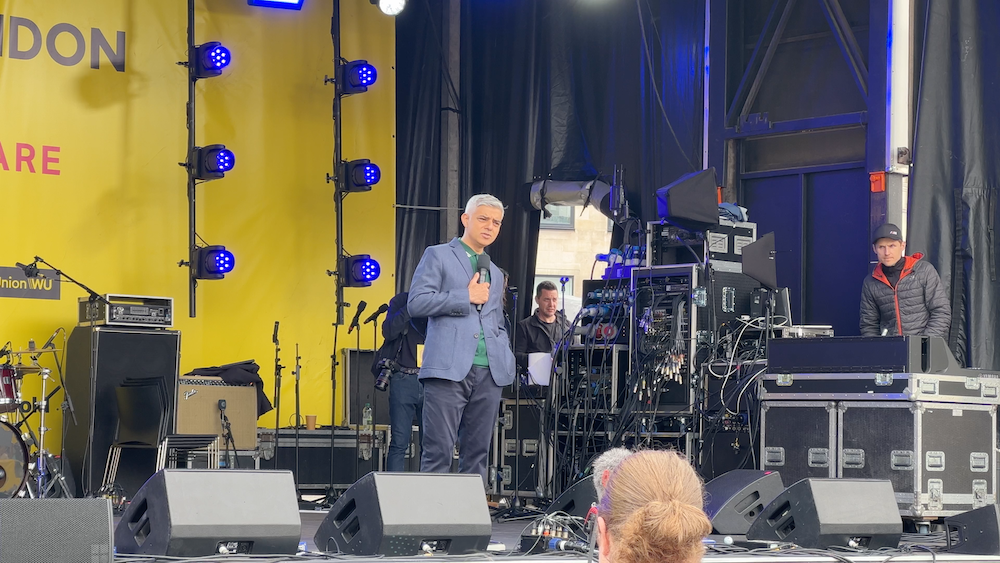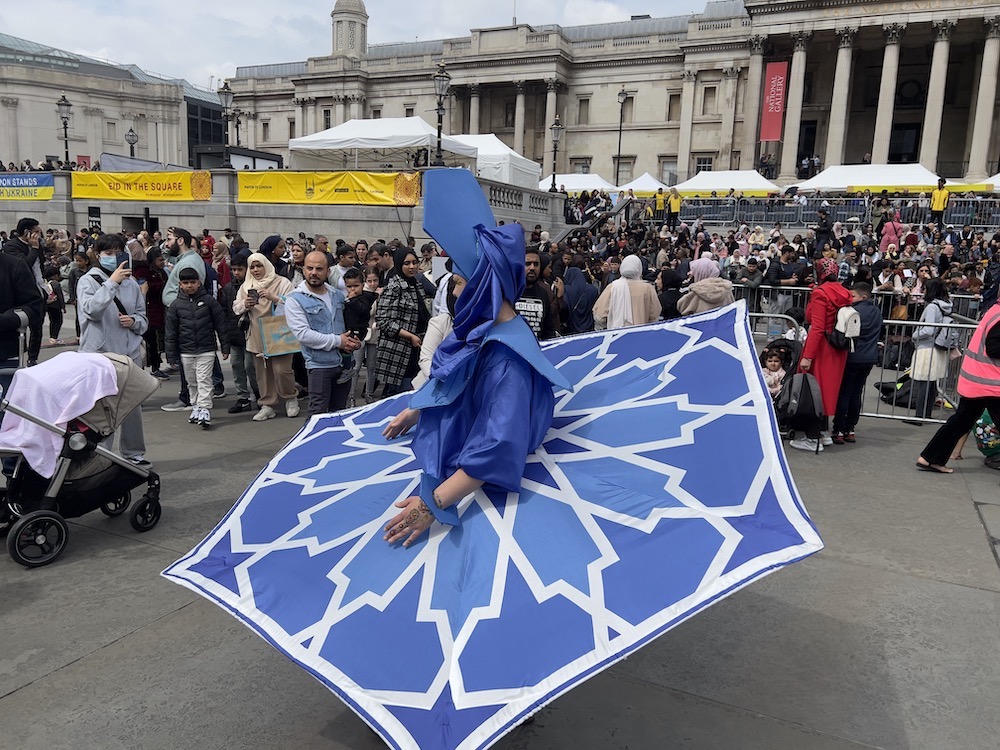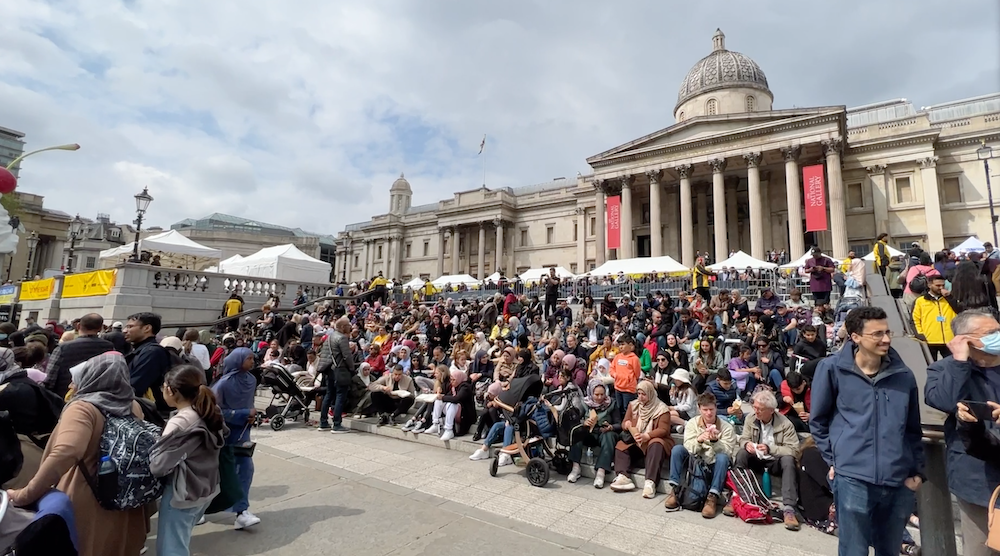LONDON: An annual celebration of the Muslim Eid Al-Fitr holiday returned to the UK capital at the weekend after a two-year break due to COVID-19 restrictions.
Eid in the Square, which is hosted by the Mayor of London, is held each year in Trafalgar Square to mark the end of the Muslim holy month of Ramadan and attracts thousands of participants, Muslims and non-Muslims alike. This year’s event was the 17th.
“Many people misrepresent the religion of Islam and many Muslims are often demonized,” London Mayor Sadiq Khan told Arab News. “The great thing about the month of Ramadan is Muslims, like me, show non Muslims what our religion is about — charity, compassion, decency — and Eid is about bringing people together and celebrating this important festival.”

Caption
As the threat of the pandemic recedes, Khan said that authorities in London want to see more events that reflect all religions. Easter and Vaisakhi celebrations have already taken place in the square this year, and it will host Diwali and Hanukkah events in the months ahead.
“It’s really important for us to realize here in London, for me, diversity is not a weakness but a strength,” said Khan. “But also that we don’t simply tolerate Muslims, we respect them, we embrace them, we celebrate them.
“I’m a firm believer in integration, but also understanding and respecting different people’s religious backgrounds, and I think it’s possible to be a proud Brit, a proud Londoner, somebody who is proud to be of Pakistani heritage or Asian origin, and a Muslim.”

Caption
The first day of Eid Al-Fitr fell on Monday, May 2 this year but Eid in the Square was held on Saturday, May 7 so that more families and other visitors could attend. The event included Islamic-inspired live music, comedy, art, poetry and other cultural performances, alongside a feast of food stalls featuring cuisines from around the world.
Many people wore Eid carnival costumes and other entertainment included family-friendly activities such as calligraphy, storytelling, mehndi (henna body art), face painting, science and drama workshops, and a variety of sports activities.
Ayham Jaaron, a 42-year-old university lecturer from Palestine, was celebrating Eid in the UK for the first time and traveled to London for the event from Loughborough in Leicestershire with his wife and two children. He said he was proud to be part of the Muslim community in Britain, a society that promotes values, tolerance and equality.
“I think this is a great opportunity for the Muslim community to come together and celebrate with other people and also to enjoy the family atmosphere,” he added.
His wife, Yasmin Abu Alhla Jaaron, a 32-year-old researcher studying for a doctorate, said she was impressed to see Muslims from a variety of cultures and backgrounds all celebrating together, and touched that non-Muslims had also joined them to share the special day. She added that because she is studying abroad she is unable to join her own family to celebrate Eid but an event like this brings all people together “so it’s just like one big family. I’m very grateful for this.”
Zia Rahman, 50, a Pakistani Muslim who recently moved to London from Germany, brought his nine-year-old son to Eid in the Square. He said he was not expecting such a large turnout and wide range of family activities.

Eid in the Square is hosted by the Mayor of London and is held each year in Trafalgar Square to mark the end of the Muslim holy month of Ramadan. (AN Photo/Hasenin Fadhel)
“In Germany, I didn’t experience that; we are a small Muslim community there,” he added. “But here, there are a lot of people from different cultures and also with different beliefs, so it is nice to see them all celebrating together.”
His son, Ameen, said he was enjoying the event and it was the first time he had experienced anything like it, though he found it strange to see so many Muslims living in a non-Muslim city.
Mariem Bouchaala, 32, a financial consultant from Tunisia, also said she had never attended an event such as this before and had not expected it to be so crowded. She was accompanied by friends from several countries, including Spain, Columbia and India and said that the atmosphere “reflected the cultural part of London.”
Ahead of the celebrations, and in partnership with Eid in the Square, for the first time ever the London Eye observation wheel on the bank of the River Thames was illuminated with a crescent moon light display to celebrate the Eid Al-Fitr holiday.






























